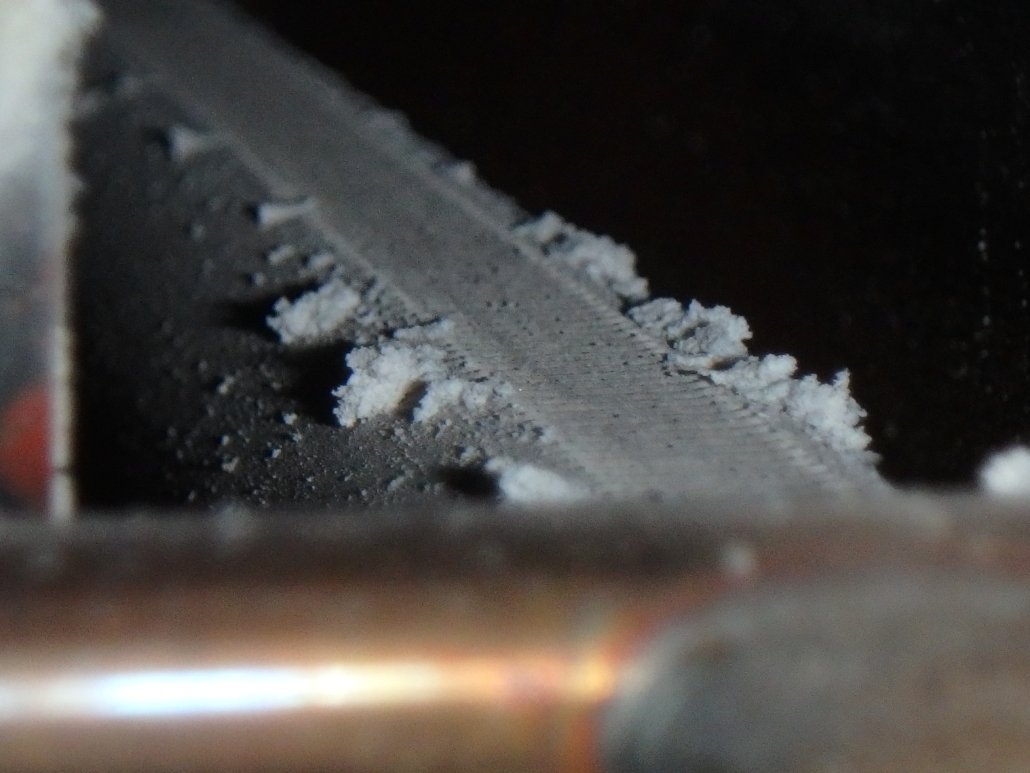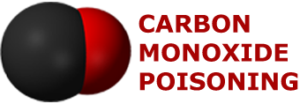FAQ: How is carbon monoxide created in a furnace which should be burning clean because it is using natural gas or propane?
Short Answer: Because something is preventing the flame from getting enough oxygen for the amount of fuel that is being burned. There can be either too much fuel, too little oxygen or a dirty burner which is interfering with the flame.

How is carbon monoxide created in a furnace? Something is interfering with the appropriate amount of oxygen getting to the flame, to create a slightly lean burn. That can be too much fuel, not enough oxygen or a dirty burner, as shown here.
Gordon Johnson: Let’s back off here a minute and let’s just talk about the simple frequently asked question how does carbon monoxide form in a fuel burning appliances? How is carbon monoxide created in your furnace at home?
Griff Winthrop: Your furnace at home needs three things to have heat, right? It needs ignition, which is always easy. You either have it or you don’t. Usually it’s a spark. Essentially the spark, some sort of a spark to start the fire. But the fire also needs oxygen and it needs fuel and the fuel that is used in furnaces is either propane or it is natural gas. And both have different properties. Both have different requirements as far as how much pressure is needed to have proper combustion. A perfect fuel air mixture is known as stoichiometric, and not to get too much into the weeds. That is not how these things are designed.
Gordon Johnson: Not even AI is going to be able to spell that word.
Griff Winthrop: Stoichiometric.
Gordon Johnson: So it took me a week to learn how to say that word more or less spell it.
Griff Winthrop: Yeah, it’s a hard word. But engineering students learn that concept. And it’s not the way furnaces or boilers are designed.
Gordon Johnson: Stoichiometric means the exact amount of fuel for the exact amount of oxygen.
Griff Winthrop: That’s right to the molecule.
Gordon Johnson: If you were on a space shuttle where you had to ration your oxygen, maybe that would be the goal, right?
Griff Winthrop: It’s theoretical. It’s difficult to maintain. And that’s why furnaces and boilers are not designed that way. These appliances are designed to be fuel lean, meaning a little too much OXYGEN and a little too little fuel to have a safety margin. Because if you go stoichiometric minus one molecule, you’re off. You’re incompletely combusting your fuel. And why is that important, Gordon? Why is incomplete combustion dangerous?
Gordon Johnson: Because incomplete combustion means there isn’t enough oxygen to form CO2, and you get CO, carbon monoxide, instead.
The easiest teaching example of how carbon monoxide forms is you have too much gas. Usually the amount of oxygen should be predictable. So something goes wrong with the gas supply in the furnace. We are looking at there. The gas valve’s stuck in the wrong location. And maybe it was the cause and maybe it was the result of. But at the end, when our clients almost died, that gas valve was stuck and there was about 40 to 50% too much gas getting to that flame.
Another common situation that we see, and we see it in too many rural cases, is that there is a propane gas supply, which comes in the tanks versus city, people who get their gas out of the out of the city gas lines. Propane has higher octane than natural gas does.
So to get the proper, what was it you called it, slightly lean burn? That you aim for, the not perfectly stoichiometric? To get the slightly lean burn, you have to reduce the amount of fuel getting to that flame by about 40%. And to do that, what manufacturers do is they put in an orifice. It’s just basically a little cone type fitting inside the gas line to reduce how much actual gas from the propane tube gets into the furnace. If installer forgets to do that, you’re going to get a 40% over burn and you’re going to have 50,000 parts per million of CO in your exhaust.
Griff Winthrop: Most of these appliances are sold as natural gas application, meaning they won’t have that orifice. So if the installer screws up or you’ve got somebody that’s trying to do their own installation in their home or some home that they rent to somebody else, we’ve run across this before. They oftentimes will not know or remember that when they’re installing it in a propane application, they have to have that orifice. And then they set the fuel pressure and they’re busy poisoning everybody there.
So it happens a lot. Also, we saw it in a case involving a one of those tankless heaters. It was a natural gas application that was put into a propane application without the orifice, and it was very deadly situation.
Gordon Johnson: The other ways in which a furnace will run too rich, is if there is not enough oxygen. This often happens because something obstructs the designed supply of what we call combustion air. For example, a bird screen on the combustion air intake will be clogged with debris. Or perhaps, a birds nest clogs a combustion air intake. Or the nature of the configuration of original installation is changed and what was intended to be a vent for fresh air for the flame, is obstructed or closed off.
Dirty burners will also cause carbon monoxide because they interfere with the oxygen getting to the flame.

Leave a Reply
Want to join the discussion?Feel free to contribute!